This Identification Guide for Lionel Electric Trains covers the "Post-war Era" only from 1945 until 1969. |
 |
|
NUMBERING OF LIONEL LOCOMOTIVES |
O27 Gauge - you’ll note that Lionel used four-digit numbers for these locomotives. |
| THE LIONEL 200 SERIES SCOUT LOCOMOTIVES |
Throughout the production of the 200 Series there were many changes that occurred to these locomotives. We’ve listed these changes in the "DISTINCTIVE FEATURES" column. All of the types listed below have plastic boilers with the exception of TYPE IX. |
| TYPE | YEAR | LOCOMOTIVE | DISTINCTIVE FEATURES |
|---|---|---|---|
| I | 1953 | 1130 | 1. Small generator is located at top rear of boiler. 2. No E-unit cut-out. 3. Small smokestack. 4. Thin running boards. 5. Plugged hole. 6. No detail on boiler front. 7. Cowcatcher is closed. |
| II | 1957 | 250 | 1. Identical to TYPE I except this type has thick running boards. |
| III | 1958 | 248, 249 | 1. Identical to TYPE I except there is a curved cut-out on top of the boiler for the E-unit lever. 2. Thick running boards. |
| IV | 1959 | 247 | 1. Small generator is located at top rear of boiler. 2. Curved cut-out slot for E-unit. 3. Large smokestack. 4. Thick running boards. 5. Plugged hole. 6. Water condenser installed below headlight. 7. Cowcatcher is closed. |
| V | 1959 | 247 | 1. Identical to TYPE IV except thick running boards with open hole. 2. Generator has been opened. |
| VI | 1960 | 243, 244 | 1. Has thick running boards with a plugged hole. 2. Generator has been removed. 3. Water condenser installed below headlight. 4. Curved cut-out slot for E-unit. 5. Large Smokestack. 6. Closed cowcatcher. |
| VII | 1959 | 245, 246 | 1. Has thick running boards. 2. Small generator is located at top rear of boiler. 3. Water condenser installed below headlight. 4. Cut-out slot for reverse lever in center of boiler. 5. Large Smokestack. 6. Open cowcatcher. 7. Pin mounting for motor is threaded. |
| VIII | 1959 | 233, 235, 236, 237, 238, 242, 246 |
1. Identical to TYPE VII except closed cowcatcher. 2. Small generator has been removed. 3. Pin mounting for motor is knurled. |
| IX | 1965 | 239, 241, 251 | Identical to TYPE VIII except that the boiler is die-cast metal. Note: This was the last production using the tooling that began in 1946 with the production of the No. 1654. |
| X | 1964 | 237, 238, 240, 242 |
This TYPE used completely new tooling designed to work with injected plastic. This body mold was similar to the types that were produced before. Notable differences are that there is no platform for the bell, and the running boards are thin. |
|
 | |
|
|
|

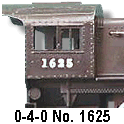
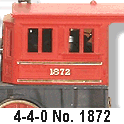
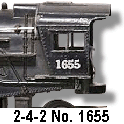
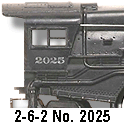
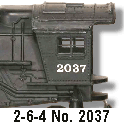
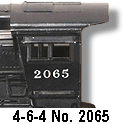
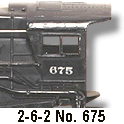
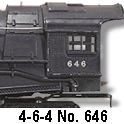
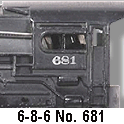
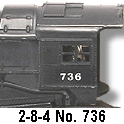
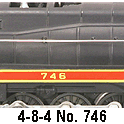
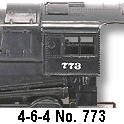
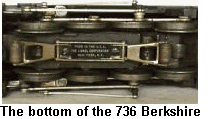 The plate on the bottom of the locomotive will provide you with additional information. This plate often shows the year of manufacture.
The plate on the bottom of the locomotive will provide you with additional information. This plate often shows the year of manufacture.